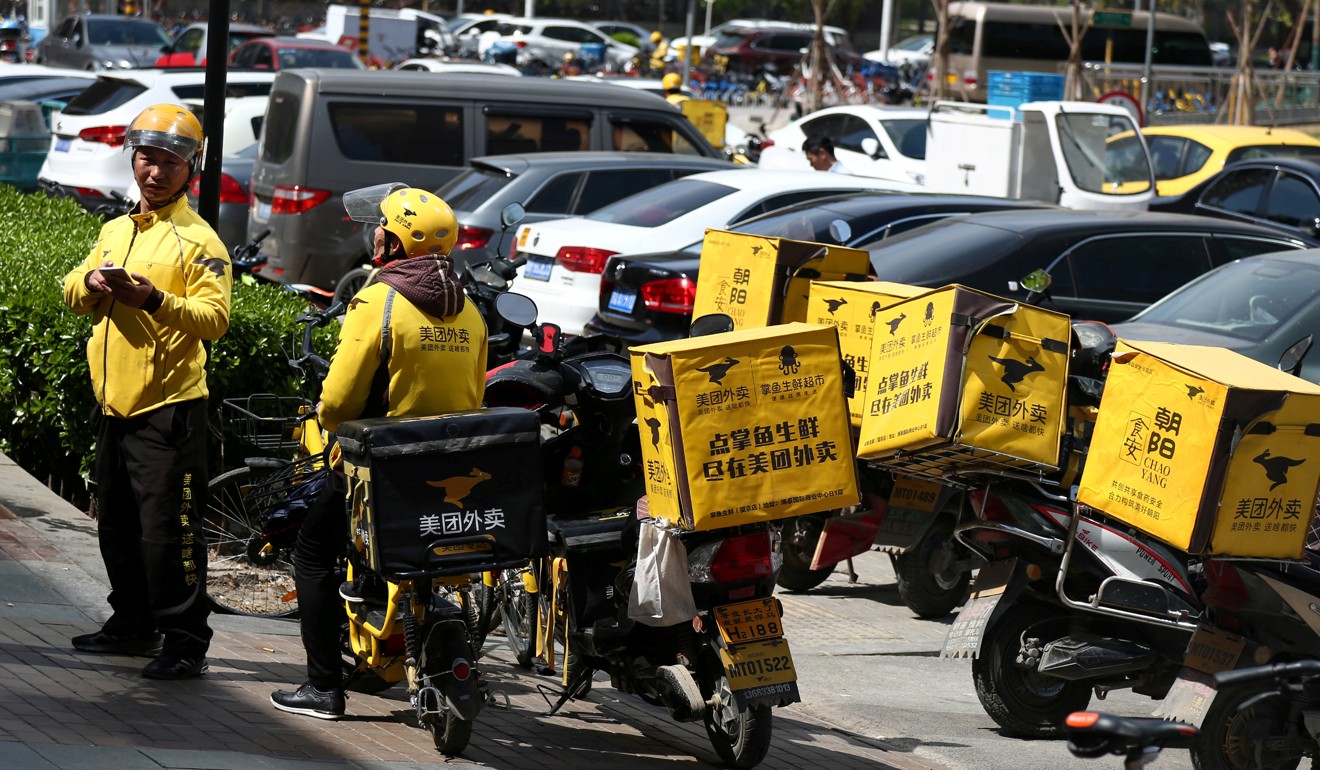
China’s complicated employment picture amid an economic slowdown and US trade war
- Officially, China’s unemployment situation improved in December with the unemployment rate dropping to 4.9 per cent compared to 5 per cent a year earlier
- But the employment situation tracked by the official purchasing manager’ index has actually worsened since last year, indicating a lower demand for new hires
Officially, China’s unemployment situation improved in December with the unemployment rate dropping to 4.9 per cent compared to 5 per cent a year earlier.
At the same time, the employment situation tracked by the official purchasing managers’ index (PMI) has actually worsened since last year, indicating a lower demand for new hires.
And on Baidu, the most popular search engine in China, searches for the word “lay-off” jumped threefold in the week after the Lunar New Year holiday compared to the same period last year, which is traditionally a high season for new hires.
One explanation for the lower unemployment rate that appears to contradict fears of rising lay-offs is the decline in the size of the labour force, which may be offsetting the impact of lower employment resulting from the economic slowdown.
China’s working age population – adults aged 16 to 59 – stopped increasing in 2012 and has fallen steadily since, and last year, shrank by another 4.7 million to 897 million, according to the NBS.
“The decline in the labour force has become a stronger variable in the China’s labour market,” said Wu Ge, chief economist from Changjiang Securities who spent several years working in the monetary policy department at the People’s Bank of China, China’s central bank.
“The change in supply could actually be helping to ease the pressure on employment.”
Structurally, China’s job market is also changing under pressure of the slowing economy in the shadow of the US-China trade war.
The tariff has taken a toll on the number of jobs in the manufacturing and construction sectors, traditional high employment areas for China’s migrant workers.
These migrant workers are now either returning home or opting to move into the expanding service sector, which includes delivery drivers.
The employment share in China’s industrial sector peaked in 2012, but then went on a gradual decline at the same time the services sector witnessed a rapid increase in its share, and the current situation has only boosted that trend further.
The number of migrant workers, who have provided the backbone for China’s industrial-led economic boom over the past 40 years, rose by only 1.84 million last year, the slowest growth since 2009.
This can partly be attributed to the general ageing of the population, but also the narrowing of the income gap between rural and urban residents that lowered the number of workers who crossed provincial borders in search of jobs.

“There is a growing number of migrant workers who prefer to work locally than far away [from their home village],” Jiang Chao, chief economist from Haitong Securities, said.
Since 2011, more rural migrant workers have been employed in their hometowns.
But, demand for top-level talent in the internet and technology industries is slowing down with Liepin, a platform matching jobseekers with headhunters, said in a report that about 17 per cent of firms cut their new hire quotas in the first quarter of 2019 compared to 12 per cent during the same period last year.
“The middle and high end of the labour market is facing pressure, but the low end of the market is still tight,” Zhang Wenlang, chief economist from Everbright Securities, said.
Regardless of the details of the labour market, local governments are setting ambitious new job creation targets this year.
The 28 provinces out of 31 that released 2019 job targets during annual meetings of political advisory bodies and legislatures held in late January and early February plan to create at least 15.58 million new jobs in urban areas this year, which is more than the 13.6 million that the entire country created last year.

Jiangsu, an economic powerhouse in eastern China, set the highest target of 1.2 million new jobs, followed by the southern province of Guangdong and the northern provinces of Henan and Shandong which are targeting 1.1 million new jobs.
The combined target to create at least 15 million new jobs is in line with an estimate in early January from the Ministry of Human Resources and Social Security, which expected college graduates to reach a new high of 8.34 million this year.
The central government will announce a nationwide target for new job creation during the national legislature and top political advisory meeting that will begin in Beijing on Sunday.
Changjiang Securities’ Wu expects China to set this year’s new urban employment target around the same 11 million from 2018.
According to Wu, even if growth slows to 6 per cent, that goal will not be hard to achieve, given that each one percentage point of gross domestic product (GDP) growth creates at least 2.05 million new jobs.
“If we take into account the [government’s stated] goal of doubling GDP by 2020 from a decade earlier, this year’s GDP growth can be no less than 6.2 per cent,” added Wu.
“As countercyclical policies begin to stimulate the economy, the overall unemployment rate could stabilise.”

